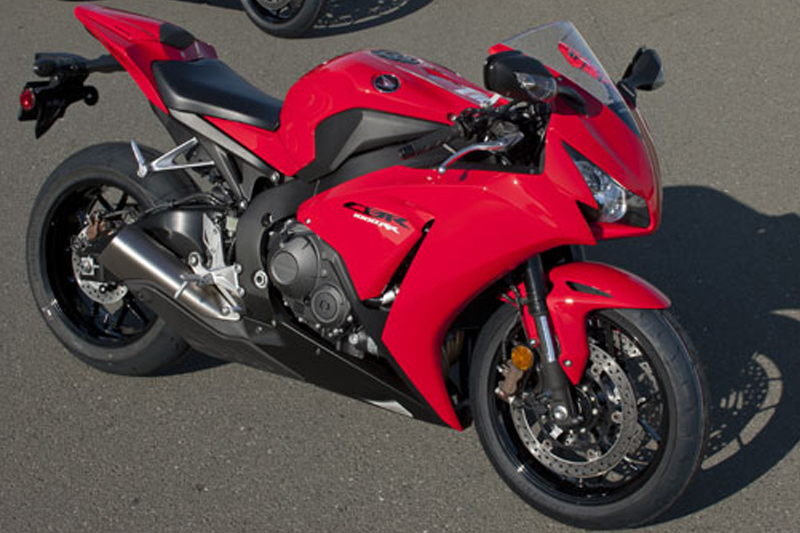2012 Honda CBR1000RR

First Ride Review
Liter-bike horsepower wars aren’t over, but they’re past the shock-and-awe phase of the campaign. With peak rear-wheel figures exceeding 150, sometimes by a considerable margin, the name of the game is harnessing all those stallions. Riding modes, traction control and ABS are now found–standard or optionally–on many liter-class sportbikes. Before new model releases, speculation focuses on which electronic aid will be added to what model. BMW’s S 1000 RR and Kawasaki’s Ninja ZX-10R offer all three. Yamaha’s YZF-R1 has riding modes and added TC for 2012 but not ABS; Suzuki’s GSX-R1000 offers riding modes only. When its optional C-ABS system debuted in 2009, Honda was the first to offer anti-lock braking on a sportbike. And three years later, Honda added traction control…to the VFR1200F.
Instead of electronics du jour, the 2012 Honda CBR1000RR–marking the 20th anniversary of the CBR-RR line–gets upgrades to its chassis, bodywork and instrumentation. Up front, the CBR sports Showa’s 43mm male-slider Big Piston Fork, which uses a larger damper volume to reduce hydraulic pressure and deliver smoother damping. Out back, Showa’s new, patented Balance-Free Rear Shock uses a double-tube design with a piston cylinder inside the damper tube. Unlike a conventional single-tube design, there are no damping valves. Instead, smoother pressure changes result from a larger volume of oil passing through a single damping chamber. Honda claims damping is more responsive and consistent, especially as the shock transitions from compression to rebound, for better rear wheel traction. Additionally, new 12-spoke cast aluminum wheels are more rigid than the 3-spoke wheels they replace.
Similar to Honda’s MotoGP racebikes and the VFR1200F, the CBR1000RR’s new fairing is layered for better aerodynamic flow and engine heat management, while an integrated spoiler in the nose reduces lift at speed. EFI settings have been revised for better throttle response, particularly at small throttle openings. The CBR’s analog tachometer has been replaced by a linear bar-type tachometer plus a numerical readout that’s part of an all-new LCD instrument panel that includes gear position, lap timer, tripmeter, fuel consumption and other functions; there’s also a five-level shift light. Even the optional C-ABS system has been refined, with less initial application of the front brake when the rear pedal is actuated and more progressive front braking force as pedal pressure increases.
Honda hosted its CBR1000RR press launch at Infineon Raceway in Sonoma, California, followed by a half-day street ride. On the track we alternated sessions between the 2011 and 2012 models, giving us a solid feel for the improvements. The 2011 CBR, despite its high power-to-weight ratio, is remarkably easy to ride, with linear throttle response, strong brakes and humane ergonomics. Infineon is a challenging track, yet the CBR responded intuitively to its many corners and elevation changes. The ’12 model was even more composed. The Big Piston Fork dives less under hard braking and soaks up pavement irregularities brilliantly, while the Balance-Free shock kept the rear tire glued to the tarmac, giving me the confidence to drive harder out of the long, downhill Carousel. A couple of sessions aboard ABS models provided an added layer of safety with minimal intrusion.
On the cold, damp morning of our street ride, editors arm-wrestled for keys to ABS bikes. I ended up on a standard model, but never felt anxious about overdoing it with the easy-to-modulate Tokico binders. Sensible restraint is the original traction control, and the 2012 CBR1000RR’s just-right throttle response and outstanding chassis make it easy to control its superbike power.
